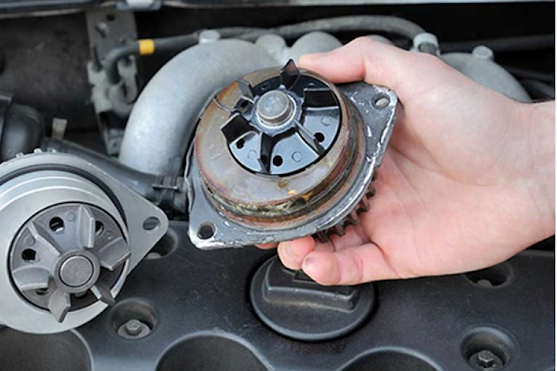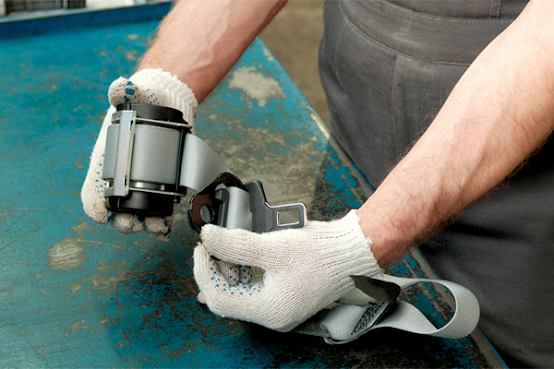Car Cooling System – Parts, Working, and Common Issues
A car cooling system keeps the engine running at the ideal temperature without any instances of overheating. Cooling the engine is a gigantic task, especially when you realize how much heat it produces. To give you an example, a small car travelling at 50mph creates around 4000 explosions/minute. Along with the explosions, the friction of the moving parts also produces heat. All of this heat can severely damage the engine, if not entirely failing it.
The modern cooling system carries the heat away from the engine with the help of a liquid. Therefore, having an effective car cooling system is essential for the efficient functioning of the vehicle.
Let’s look at the various components, functions, and issues of the car cooling system.
Car Cooling System Parts – What it contains?
We learnt how the engine produces a high amount of heat that needs to cool down for the efficient functioning of the vehicle. Cooling down an engine involves complex mechanisms and components that work together to ensure everything is well within the temperature range.
Let’s look at the car cooling system parts and functions to understand our favourite machines better.
Here is the cooling system parts list:
- Water Pump
- Radiator
- Pressure/Radiator Cap
- Cooling Fan
- Heater Core
- Overflow Tank (Coolant Explosion Tank)
- Thermostat
- Hoses
- Freeze Plug
1. Water Pump
The water pump is what carried the coolant through the engine. As the burning fuel produces around 4,500 degrees of heat, it is essential to draw off the heat from the engine to avoid damage and failure. The water pump propels the coolant through the engine block, heater core, and cylinder head to absorb heat. The coolant enters the radiator, where it cools down.
A broken water pump will hamper the entire cooling system process, leading to an overheated engine and sometimes a complete failure. The pump is driven by a belt that needs replacement from time to time.
2. Radiator
When the coolant circulates through the hot engine, it heats up. The radiator helps to cool down the coolant before it starts with the process all over again. The anti-freeze moves through metal fins for heat dissipation. Most radiators have two tanks that hold a coolant – one on the top and bottom or one on both sides.
3. Radiator Cap
The radiator cap is also known as a pressure cap, as its primary function is to maintain the pressure in the cooling system. The high pressure in the car cooling system increases the boiling point of the coolant, thereby helping it cool down more efficiently. The pressure cap is, therefore, an essential component that needs regular replacement. For Car cooling system repair, consult your service centre.
4. Cooling Fan
The radiator contains cooling fans that drive fresh air over the radiator, allowing the engine to be cooled down further. However, the fan is functional only when the engine gets to 230°F or more. The additional airflow helps to provide more intense cooling. The fan is located at the front of the vehicle. It automatically turns on when the coolant gets too hot and switches off when the coolant reaches adequate temperature.
5. Heater Core
The heater core acts as a mini radiator, wherein it extracts the heat from the hot coolant and blows it into the cabin. It is how you get the blast of warm air in your car cabin when it is freezing outside.
6. Overflow Tank/Coolant Expansion Tank
The coolant expansion tank acts as a reservoir for excess coolant whenever there is a change in the volume. For instance, when the coolant gets hot, it expands. The overflow tank then holds the additional quantity, thereby maintaining the accurate level of coolant in the cooling system. The tank cap also uses a special valve to maintain the pressure level and keep the air out of the system.
A word of caution; NEVER open the radiator cap or the overflow tank when the engine is hot. It could lead to some fatal burns and injury.
7. Thermostat
The engine has to go through all kinds of temperatures, ranging from extremely hot to extremely cold. The thermostat is what regulates the coolant entry through the system.
When you start the engine, the temperature inside the system is cold, and therefore, the thermostat uses a valve to restrict the coolant flow. As the engine warms up, the valve opens up, allowing the coolant to move through the entire car cooling system.
8. Hoses
The hoses are a series of pipes that connect the radiator and the engine so that the coolant can flow through it. They are made from durable material as they have to go through a lot of pressure and high temperature. If you do not replace it, they might begin to leak and even lose the connection to the radiator.
9. Freeze Plug
Freeze Plug is another car cooling system part that helps to protect the engine. As water expands when it freezes, the coolant can also freeze in cold areas when the vehicle is sitting idle. The freezing coolant is a threat to the engine block and may even crack it. The freeze plug can withstand the pressure of the running engine, but once the coolant freezes, it pops out of the engine block. A little action can save your engine!
Now that you are aware of car cooling system components and their function, let’s take an overall look at the working of the system.
How does a Car Engine Cooling System Work?
There are essentially two types of cooling systems in an engine – Air-cooling system and liquid-cooling system. Most of the modern vehicles use the liquid car cooling system as it proves to be more efficient and available.
A coolant is not just plain water, as it can evaporate at high temperatures and freeze at low ones. Moreover, water contains impurities that can corrode the cooling system and hamper the working of the system. Therefore, the coolant is made with a mixture of antifreeze and water. Antifreeze is made from ethylene glycol and can withstand high boiling temperatures as well as temperatures below zero.
For most cars and climates, a 50/50 ratio is used for water to antifreeze. You can buy the mixture outside, or make it in your own garage. However, make sure you stick to the 50-50% as anything below that will reduce the effectiveness of the coolant.
Make sure you handle the antifreeze with caution as it is an aggressive chemical that is poisonous to both humans and animals. Make sure you take all the necessary precautions before dealing with it.
Car Cooling System – The Working
A liquid car cooling system works to regulate the engine temperature with the help of the coolant. The coolant passes through the entire engine block, absorbing heat, and then travels to the radiator to be cooled down.
The coolant is driven by the water pump that carries it through the block before reaching the radiator. So, how does a car radiator work?
It consists of a cooling fan that cools down the hot liquid as it passes. Once the coolant travels through the radiator, it is back to its original temperature and ready to go through the engine to absorb more heat.
The radiator is connected to the engine by rubber hoses and equipped with a top and bottom tank linked with many fine tubes. The tubes go through a pile of thin sheet metal fins so that the core has a large surface area, allowing it to lose heat quickly.
The thermostat regulates the coolant entry into the engine block. If the engine temperature is below a certain degree, the valve regulated by the thermostat restricts the coolant. Once the engine temperature starts rising, the coolant is allowed to pass through the engine block.
As the hot engine works to pull the car forward, it is very much possible that the coolant might reach its boiling point. However, the situation is avoided by increasing the pressure in the system, which regulates the boiling point. The additional pressure releases with the help of the radiator cap that has a pressure valve. The coolant flows out through the overflow pipe into a reserve/overflow tank. Once cooled down enough in the tank, the fluid returns back into the cooling system to circulate.
The liquid car cooling system leads to a slight loss of coolant as the engine runs extremely hot. It is essential to top up regularly...( continue reading )









Comments
Post a Comment